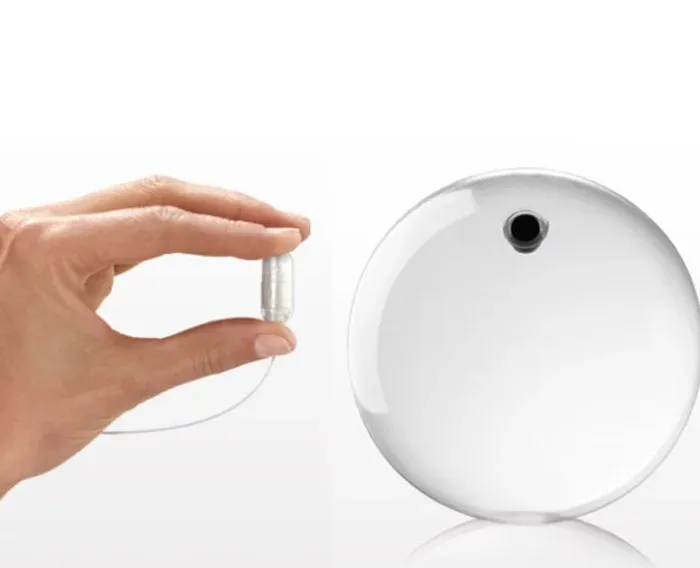Key takeaways:
- Adults with obesity who received a novel gastric balloon treatment followed by liraglutide lost nearly 19% of their body weight at 6 months.
- No serious adverse events were reported during the study.
Use of a swallowable gastric balloon in conjunction with a GLP-1 receptor agonist induced a mean weight loss of approximately 19% for adults with overweight or obesity, according to a speaker.
In findings from a multicenter study presented at the European Congress on Obesity, 181 adults with overweight or obesity received a swallowable gastric balloon (Elipse, Allurion Technologies) that passes through the body without the need for surgery, followed by liraglutide (Saxenda, Novo Nordisk). At the end of the study, the cohort lost 99.4% of their excess body weight and a had mean BMI reduction of 6.4 kg/m2 with no serious adverse events.

Data were derived from Ienca R, et al. AD01.01. Presented at: European Congress on Obesity; May 17-20, 2023; Dublin.
“For all patients treated with the Allurion balloon program where additional weight loss is needed or to sustain weight maintenance, the addition of GLP-1 receptor agonist therapy is feasible, safe and effective,” Roberta Ienca, MD, of the Nuova Villa Claudia Clinic in Rome, told Healio.
Researchers enrolled 181 adults from three obesity centers in different countries (80.1% women; mean BMI, 33.7 kg/m2). All participants received a swallowable gastric balloon at baseline. Between 4 and 16 weeks after receiving the balloon, liraglutide therapy was added to treatment. Adults were followed for at least 6 months. Body weight loss, percentage of total body weight lost, percentage of excess weight loss, BMI loss and adverse events were collected.
The reasons for liraglutide being added to therapy were unsatisfactory weight loss with the gastric balloon alone for 52.6% of the cohort, a reduction in balloon-induced satiety for 29%, a wish to further boost weight loss for 16% and diabetes control for 2.4%. The average duration of liraglutide therapy was 4.1 months.
From baseline to 4 months, the cohort lost a mean 13.9% of total body wight and 74.3% of excess weight. The mean BMI reduction at 4 months was 4.5 kg/m2. From baseline to the end of liraglutide therapy, participants lost a mean 18.7% of total body weight, 99.4% of excess weight and had a mean reduction in BMI of 6.4 kg/m2.
“We found it surprising how two treatments with the same mechanism of action complement each other so well when combined at the right time,” Ienca said. “Results showed that patients in the study reached an average total body weight loss of almost 19% after approximately 8 months. The study concluded that combination therapy was safe and effective and could further enhance weight-loss outcomes and durability.”
Most balloon-related adverse events such as nausea, vomiting and abdominal cramps were managed with medications. Of the cohort, 1.1% had intolerance requiring gastric balloon removal, 0.5% reported gastric dilation and 0.5% had early balloon deflation. Adverse events requiring discontinuation of liraglutide were tachycardia or chest pain in 1.1% of the cohort and gastrointestinal symptoms in 1.1%.
Ienca said more research is needed to examine whether the weight loss achieved in the study can be maintained long term.
Published by:
Sources/Disclosures
Source:
Ienca R, et al. AD01.01. Presented at: European Congress on Obesity; May 17-20, 2023; Dublin.
Disclosures: Ienca reports serving as an adviser for Allurion Technologies.

